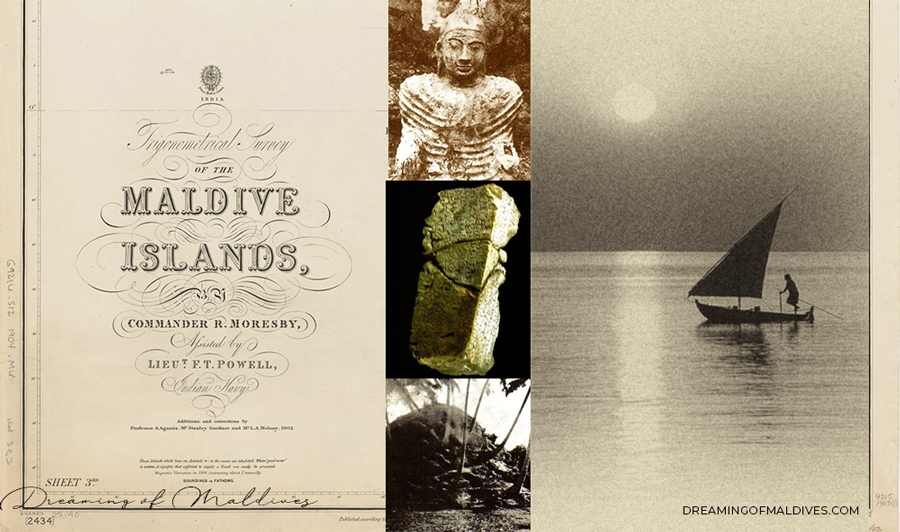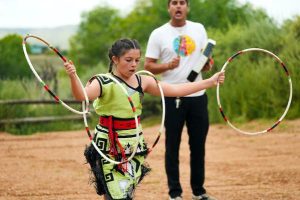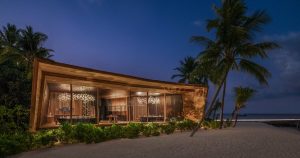
If you’re looking to experience a different side of the Maldives Islands and learn more about their history and cultural heritage, this is for you.
Discover why the magnificent island nation is more than a tropical picture-perfect postcard and go beyond the standard knowledge.
A Guide to Maldives History : In Search of The Past
Much of the history of the Maldives is unknown, but based on local tales and archeological researches, it appears that the islands have been inhabited for several thousands of years.
There are many pre-Islamic heritage sites found in the country but few have been properly excavated nor preserved. Furthermore, when Maldivians converted to Islam in the 12th century, they discarded or destroyed all traces of earlier cultures, thus denying their past.
The Maldives National Centre for Cultural Heritage
However, the past decade has shown that the country is willing to enhance and preserve its pre-Islamic heritage by launching a series of researches for their past and save its patrimony.
This has led to an governmental program and finally to the creation of The Maldives National Centre for Cultural Heritage in 2019.
NCCH work consists in searching, conserving and restoring the various historical sites and artefacts of the Maldives with some of their projects funded by the Government of India.
The NCCH followed the ratification of the Heritage Protection Act of the Maldives signed the same year to stop any degradation of the island historical patrimony and to ensure the documentation, preservation and protection of the Maldives cultural heritage.
The Heritage Protection Act of the Maldives. A first in the Maldives.
President Ibrahim Mohamed Solih ratified The Heritage Protection Act of the Maldives in September 2019.
This Act also ascertain the procedures and jurisdictions of the state and individuals, as well as stipulate that acts resulting in the loss of items or sites of historical significance as criminal acts. The purpose of the Heritage Act is to safeguard the perpetuation of items and sites of historical significance to future generations.
This recent interest and discoveries are however not new. Several expeditions and researches have been conducted in the archipelago of the 1000 islands during the 20th century.
Maldives History Unveiled by Early expeditions
In the early 80’s, Thor Heyerdahl, one of the greatest explorers of the 20th century, spent 1 year in the Maldives exploring various archeological sites after receiving a photo of a unknown stone statue on a Maldives island.
About Thor Heyerdahl
Thor Heyerdahl (1914–2002) is an ethnologist and adventurer who led various expeditions to prove the possibility of ancient transoceanic contacts between distant civilizations and cultures.
Known as one of the greatest explorer of the 20th century, Heyerdhal traveled many oceans from Norway, his country.
From the Persian Gulf, across the Arabian Sea, to the Red Sea, the Indian Ocean to the most known of all : the Pacific for the famous Kon-Tiki expedition.
Heyerdahl came to the Maldives to continue his search for transoceanic migrations in ancient times
The Kon-Tiki and the theory of transoceanic migrations
During this expedition, he sailed together on a self-made raft called the Kon-Tiki together with 5 companions from the western coast of South America to the east islands of Tahiti for 3 months 1/2.
Their arrival in Polynesia demonstrated the possibility that the Polynesians may have originated in South America, thus proving his theory of ancient transoceanic migrations plausible.
The Kon-Tiki raft. © Nasjonal biblioteket from Norway. The boat has been preserved at the Kon-Tiki museum in Oslo, Norway.
Now that you know more about Heyerdahl and his theory, lets’ head back to the Maldives shall we ?...
Heyerdahl archeological expeditions in the Maldives
The photo of the unknown statue found in the Maldives was enough to catch Heyerdahl’s attention. In 1983, he launched a first expedition to the archipelago ( by plane this time ) with his friend and archaeologist Arne Skjølsvold to find out more about the people who had made the statue.

The Maldives Mistery
From his time spent in the Maldives he wrote a chronicle called The Maldive Mystery, unearthing various relics and trying to piece together the islands’ pre-Muslim history.
From Sun-Worshipper Pyramids to Buddhist Temples and Stupas
In the Maldives, Heyerdahl thought he saw sun-temples and pyramids in the mounds or low hills that exist in certain islands, such as Gan at the extreme south of Maldives.
This led him to believe that sun worshippers from the ancient Indus Valley arrived in the Maldives via India and Sri Lanka in the first century BC.
But in fact the hills of all the Maldivian archaeological sites he visited were ancient Buddhist Stupas.
Since islanders took away stones from those Stupas for building their homes, when the round structure on top collapsed on the quadrangular base, it left shapes that could be said to be roughly conical or pyramidal.
Mounds from 550 AD
The mounds contained small temples made of carved blocks of stone or coral, some built as early as 550 AD.
Heyerdahl expedition also uncovered small stone wading pool for what is believed to be celebrations, stone statues, some of which represent Buddha and small stupas.
Landhoo Island Archeological Buddhist site Maabadhige mound in Noonu Atoll © National Centre for Cultural Heritage. 1987
From Europe to Africa, the Maldives were key in the trade routes
Being a stop-over and at the crossroad of the busy trade routes in ancient times, the Maldives have been a regular stop-over for centuries, used by seafarers and traders on the trade routes of Asia and Africa that also branched off toward Europe.
Cowrie Shells were found in pre-Viking tombs in Sweden and in west Africa.
An important export of the Maldives in ancient times was cowrie shells which were used as money in trade.
Thousands of cowrie shells have been excavated by archaeologists at the port of Birka in Sweden and in West-Africa.
They are an important clue as to the great distances covered at the time.

interesting fact
Cowry shells can be found by millions in Maldives. They were used as units of money in ancient times. This is why nowadays shells commonly ornate Maldivian coins.
More researches and artefacts from other Civilizations
These excavations have undoubtedly shown the prominent Buddhist past of the Maldives, but other researches and artefacts demonstrate that the archipelago had been visited by several civilizations from the ancient world.
The Maldives are already mentioned in written sources from the Roman era and stashes of Chinese crockery were found buried in various locations in the Maldives.
Other influences with ( not yet ) found remains
In the 15th century, Portuguese invaded the Maldives but nothing remains from this era of invasion. ( See Utheemu history for more ). It is the same for the Dutch who, in the mid-seventeenth century, had replaced the Portuguese as the dominant power in Ceylon.
The British later expelled the Dutch from Ceylon and included the Maldives as a British protectorate in a 1887 agreement. The British had however no presence in Maldives, excepted for its Royal Naval Air Service (RNAS) base in Addu Atoll. The British have brought many artefacts from the Maldives by seeing this impression collection at the British Museum.
Royal Naval Air Service (RNAS) base on Gan Island, Addu Atoll. Post WW2. © Royal Navy Research Archive
Recent researches in the Maldives
These various archeological discoveries prompted the government to invite researchers to examine the artifacts and attempt a reconstruction of the Maldives pre-Islamic history.
In 2001, a coral block was found at the Maabadhige archaeological site on Landhoo island in Noonu Atoll. The block has inscriptions on four sides that depict a version of a mantra of an old form of Buddhism dating to the 6th century AD.
Thoddoo island Coral stone. © National Centre for Cultural Heritage
Maldives is trying to preserve its historical heritage
Other initiatives are also launched to preserve Maldives history. One the most important one is Maldives Heritage Survey.
The project, based at the Oxford Centre for Islamic Studies, is led by Dr Michael Feener and funded by Arcadia, a charitable fund that preserves endangered cultural heritage, protect endangered ecosystems, and promote access to knowledge.
Work in the country is done in partnership with the Maldives Department of Heritage (now National Center for Cultural Heritage), the support of Washington University’s SaieLab, the Earth Observatory of Singapore and many Maldivians.
Maldives Heritage Survey aims to systematically inventory and document endangered tangible cultural heritage in the Maldives – including mosques, cemeteries, Buddhist temple ruins, and other historical structures and physical objects – through digital photography, laser scanning, 3D modelling, and GIS to create an open-access resource website and heritage database.
Watch Maldives Heritage Survey introduction video
Various archeological discoveries found on Maldives islands
Gan Island. Addu Atoll
Gan features extensive remains from the Maldivian Buddhist period.
One of the most important site is the remains of what was a fairly large Buddhist temple and several other mounds rising up up to 9 m high.
Thoddoo island. Alif Alif Atoll
Thoddoo island is home to well preserved ruins of a Buddhist temple. Here was found also Roman coin from 90 BC and golden, silver items as well as a Buddha statue buried nearby.
Thoddoo island Buddha statue. © Maldives Royal Family
This Buddha statue was found carefully buried on Thoddoo island in 1959.
It had been preserved underground for nearly 800 years after being hidden during the declaration of The Islamic kingdom by royal decree in 1153. It is believed that islanders removed the statue from a higher position and placed it upright on the floor of the temple where sand had been spread. It was then surrounded by hewn stone slabs and more sand and rocks. A protective slab was placed over the statue and additional rocks and sand were added to the pile until the temple had become a mound. The heap was then covered in soil.
Isdhoo. Laamu Atoll
Isdhoo island has some of the most impressive Buddhist landmarks in Maldives. These ruins include one of the largest stupas so far found in the country as well as copperplate sheets that contained ancient royal edicts testifying the transition of the Maldives from Buddhism to Islam.
Kaashidhoo island. Kaashidhoo Atoll
Kaashidhoo island is the site of one of the largest archeological sites in the Maldives. Called Kuruhinna Tharaagandu, the remnants are of an old, complex Buddhist temple that has been built in several stages from the 3rd to the 9th century AD.
The site demonstrates that Buddhism existed in the Maldives for a long time.
Kuruhinna Tharaagandu, Kaashidhoo island. © Visit Maldives
Gadhdhoo island. Laamu Atoll
Gadhdhoo island is home to an enormous Buddhist stupa that rises as a pyramid above the forest. Called Vadiyaamagu Hawitta, it is also one of the most impressive ruins to be found anywhere in the Maldives.
Fuvahmulah island. Gnaviyani Atoll
Fuvahmulah island has a 12 m tall mound called Fua Mulakku Havitta. The remains of what was a Buddhist temple is one of the largest pre-Islamic monuments in Maldives. The structure has stones decorated with intricate patterns.
Fua Mulakku Havitta, Fuvahmulah island. © Harry Charles Purvis Bell, 1922
There are several dozens of islands with archeological sites in Maldives. Among them are :
Landhoo island, Dhanbidhoo island, Dhevvadhoo, Ariadhoo to name just a few.
MOre Maldives Stories

Utheemu is one of Maldives most important historical place. The island is the birthplace of Sultan Mohammed Thakurufaanu, Maldives national…

How it is to build a resort in Maldives ? The process of transforming a desert tropical island into a small village is a serious challenge and…

Yes ! You read it well…I honestly never thought I would write such a title The new and upcoming Star Wars, Rogue One, A Star Wars Story,…
Various sources and information about Maldives archeological sites and history :
Your TOP Best Maldives Resorts 2022YOUR CHOICE. YOUR DREAM. YOUR VOICE
[ Official ]
Traveler’s Choice
11th Edition



